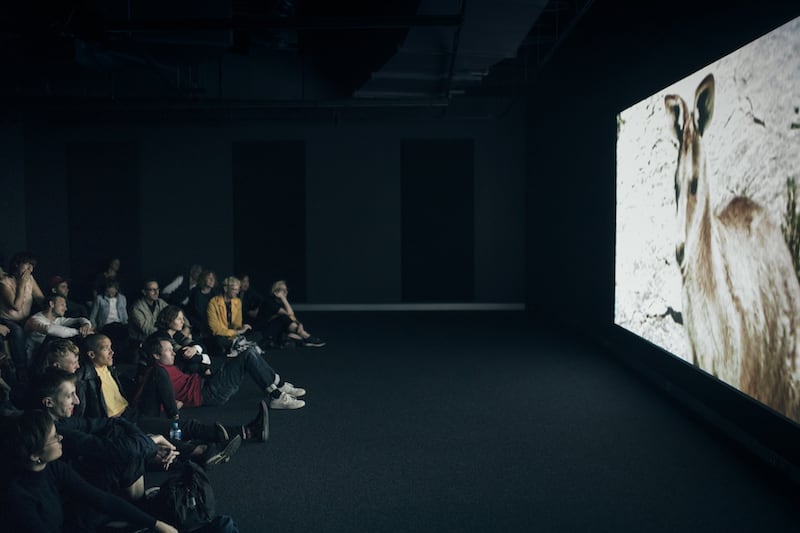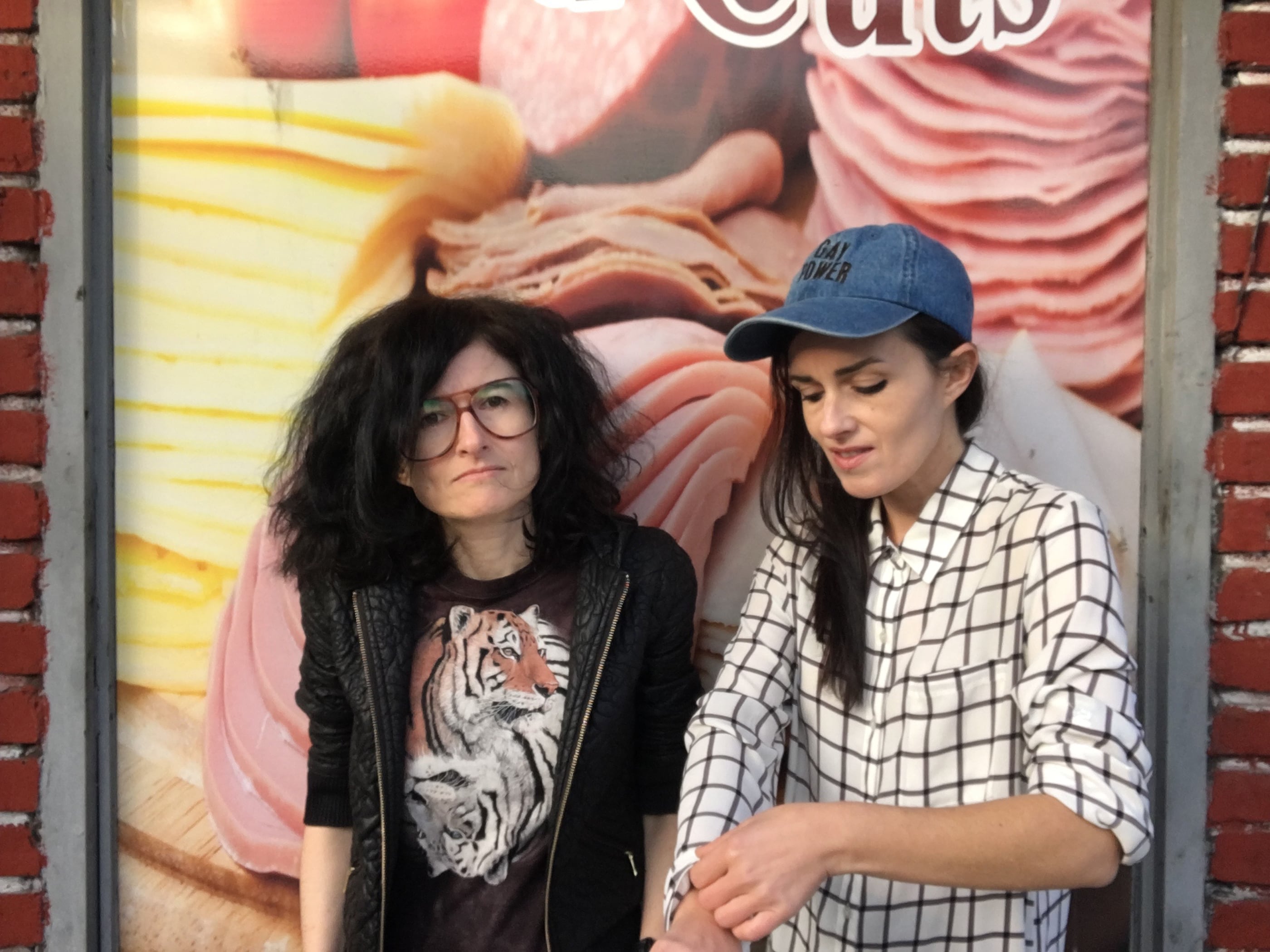

Artist: Soda_Jerk
The condemnation of TERROR NULLIUS (2018) by its funder, the Ian Potter Cultural Trust, is well known by now and has many of Australia’s cultural elites calling out in well-rehearsed shock: How can this be considered radical? This is no surprise for us, this is the Australia we live in! I agree, they are right.
TERROR NULLIUS shows the real conditions of Australia, and that Australia remains conservative. Inside the film’s world of terror, explicit white racists and xenophobes are looked upon by the languid, leisurely middle class. White cis-queers celebrate their marital inclusion, while the law continues to ignore the most at risk in the intersecting LGBTIQ+ world. The pleasure of revenge that TERROR NULLIUS’ textual citizens, and their IRL audiences, receive in watching their ideological opponents be harassed, die or finally reveal their true sexual nature, is a world we already encounter. The film relays the spoken and unspoken desires that much of Australia already holds and acts upon. It is true that TERROR NULLIUS does not show us anything new, it is a world that already exists. But what are the implications of perpetuating a textual terra nullius inside and out of the text?
I am writing this because I have been waiting to read a criticism willing to approach the explicit namesake of the film’s title, TERROR NULLIUS. While the Federal Government may have overturned the legal doctrine from its official language, the myth of a pre-colonial cultural landscape that is void of occupied, agricultural, politically structured and deeply loved territories is still intact. Settler-colonial Australia remains unwilling to engage with Indigenous political sovereignty, swiping the Uluru from the Heart statement to one side and constipating Treaty negotiations. Despite these deliberate deferrals of proper political conversation that have been happening since the start of colonisation, we are passionately making art and telling our stories; we have generated an exceptional and beautiful backlog of material. Many settlers believe that not knowing our stories must be because Aboriginal and Torres Strait Islander peoples have been forced into total silence, that as ‘victims’ our knowledge is simply not there to be listened to or read. Better yet, some claim (including far too many of my university students) that beyond our stories, images of us, taken and made by ourselves or others, are equally absent.
This is contrary to the truth. Australian Indigenous people are one of the most visually over-represented peoples for our population size in the colonised world. Since the late 19th century, images circulated by commercial photographers, explorers, researchers, artists, filmmakers and advertisers have dripped from the ceiling of colonial Australia’s archive. It is impossible not to spot us. A more radical realisation still, is that for the last sixty years we have been shooting, directing and producing our own photographs, films, and television series.
TERROR NULLIUS is a funny film, and a nostalgia trip for anyone old enough to remember Y2K, particularly if you watch Australian movies and politicians speak on TV. Thrown into one diegetic universe, the 50-minute film is a mass montage of different film characters and settings from Australian (and international) film and television. The time period of the clips used begins at the end of the 1960s, a few years prior to the notable shift from anthropological representations of Indigenous people in Australia to representations ordered by the conventions of a growing documentary and feature film industry. By the 1980s, Indigenous Australia was well and truly in charge of its own representations, including running their own media stations. I was born in 1989 and have grown up with Aboriginal people on the television; I danced as a toddler to music videos by Yothu Yindi and watched Beneath Clouds by Ivan Sen as a teenager, stoned as a mullet on Invasion Day. There is no limit to our cinematic prowess nor to our saturation of images.
But watch TERROR NULLIUS and you will quickly recognise Aboriginal and Torres Strait Islander peoples as missing from the picture. Full, embodied ones, at least. In the film, human characters are more often subsidised by symbols (a black plastic doll, Archie Moore’s Anarchy artwork and the iconic ‘White Australia has a Black History’ t-shirt). These symbols are referred to in passing by the actions of woke children or talkative animals. Animals act on behalf of Aboriginal people and we can assume this semiotic regression, designating us back into flora and fauna, is a deliberate critique. The sad irony of the film beginning with David Gulpilil’s omniscient voice, lifted from Ten Canoes and claiming what follows as his own, and ending with a white guy from The Castle stating it is his, is not underplayed. This is the world of terra/TERROR NULLIUS after all. By the terms of the film, Aboriginal people can’t exist. The film’s critique that Aboriginal Australia continues to be trumped by obnoxious white people, eager to possess anything and everything, is blatantly clear.
But what about our wealth of cinematic imagery? Why couldn’t Jedda show up? Where is that perfectly gleeful and deadly trio from Nice Coloured Girls? We do see Leah Purcell circa Lantana and Deborah Mailman in one of her many roles. But what about the other cast from Radiance, for example? The Sapphires? Mystery Road? Why are all these seminal films missing?
Could it be that the concern of further appropriating Indigenous people’s imagery and screen presence created a block on the creative process? What could have happened if our characters were participants? What possibilities could we have explored? My follow-up question is this—what is worse: to perpetuate a nation deliberately ignoring a population’s creative output, or to attempt a more exciting reconstruction that sees us on an equal playing field, fighting back against the patriarchs of terra nullius, alongside white feminists and married queers? Put simply, why do they get to have all the fun? Soda_Jerk’s public statement for the film is that it is an eco-horror, revenge fable.1 But I am wondering, revenge for who? Everyone but the Aboriginal people, so it seems. While everyone else gets a laugh out of defaming their enemies in a free-for-all fantasy, we remain in the cupboard with the other out-of-reach items.
I agree with Soda__Jerk that in our time of rampant conservatism, artists must push things further.2 This extends to recognising participation in Indigenous history (we are always already complicit) and descending into ‘the chaos of knowledge’3 that makes up any world, textual or otherwise. TERROR NULLIUS’ exclusion of such a wealth of Indigenous filmmaking and media proves Soda_Jerk’s very point about resisting self-censorship. Their silence only benefits white Australia’s discursive control, which is far more precarious than we think.
TERROR NULLIUS is evidence of the need to break from what Professor Marcia Langton identified twenty-five years ago as an obsession with only producing and responding to visual media of and by Indigenous peoples within a positive/negative binary.4 We should listen closely to Langton’s concern that censorship denies Indigenous people’s intellectual rights and history, along with the shared capacity to change colonising world views.^5 When it comes to Indigenous representation, I ask the question again: ‘why must only banality do’?^6
Neika Lehman lives in Narrm, working as an artist, writer and educator. She descends from the Trawlwoolway peoples of North-East Tasmania.
